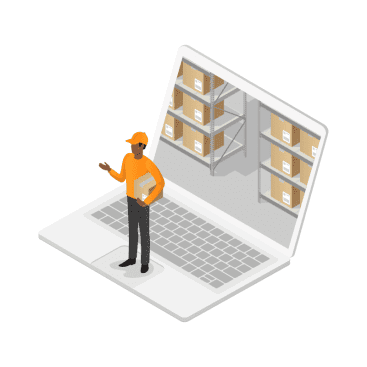The consumer wants sustainable logistics, plain and simple. While you may only have time to focus on getting boxes out the door right now, better planning of how those boxes get packed and delivered to the consumer should be a core focus of your order fulfilment operations to support rapid changes coming in the next few years.
Let’s look at why this is, and how an adaptable, flexible order fulfilment solution elevates your ability to deliver on these imminent changes.
The catalyst: unprecedented delivery speeds
Early adopter ecommerce shoppers were characterised as being cash-rich, time-poor individuals, searching for instant gratification, obtaining new-to-market products in the shortest possible delivery timeframe.
To satisfy that perceived requirement, next-day and even same-day deliveries became the target delivery window for leading Direct-to-Consumer (DTC) operators.
DTC order fulfilment: connecting with the planet-aware consumer
Over time, however, that growing community of ecommerce buyers contains an increasing proportion of planet-aware consumers, knowledgeable and sensitive to the supply chain and delivery impact of the orders they place.
Today, sustainable logistics should be a core component of any DTC ecommerce order fulfilment program.
Localised sourcing, timed deliveries, and order pooling
Witness the awareness of food miles, with consumers increasingly preferring homegrown products that do not require out-of-season items to be flown in year-round.
They are also aware of the potential of creating ordering patterns that place a requirement for several near-empty delivery vans to travel to the same location.
They favour, for example, click-and-collect order fulfilment options, which allow pick-up to coincide with already planned journeys. At the very least, they’re looking for timed delivery to avoid missed drops. And, where possible, for those to-be-pooled orders, combining sources and/or other local consumers in single and more efficient delivery routes.
Sustainable logistics and zero-emission options
Local government has, in a growing sample, recognised the need to take an active role in defining ultra-low emission zones in urban areas. The impact is the need for shippers to consider the use of zero-emission, final-leg delivery options.
For the direct-to-consumer service provider, whether a manufacturer, retailer, marketplace, or shopping mall / micro-fulfilment centre, the implication is that the customer offer must include optionality for fast – yet environmentally responsible – delivery mechanisms.
And what about all those cardboard boxes? Plenty of articles exist to imply that Amazon is now considered synonymous with “shipping air” and the direct impact of that. For consumers grappling with cardboard waste management, the struggle is real.
Order management software that allows you to offer sustainable packaging options and cartonisation – or automatically selecting the smallest appropriate outer carton – is a smart move for DTC brands that want to connect and build lasting relationships with their customers.
Fast delivery is no longer ALL that matters
The fulfilment approach needs to appreciate that immediate delivery is not the default, set aside click-and-collect order fulfilment services that require inventory to be reserved and updated in real time as unavailable, despite still being physically present. In order to find the most cost-effective, and best-fit option for the shopper, a selection of carrier options must be considered.
And by “best fit,” the packaging strategy must also make sense for the provider in terms of reducing shipping costs. According to DigitalCommerce 360, in a recent survey of shoppers and retailers, 41% of retailers saw shipping costs as their biggest concern in 2022, with a third of them seeing this continuing through 2023.
An effective packaging strategy presents an opportunity to share those savings with the consumer to incentivise a behavioural change.
The analysis of all of this – time to automate!
As volumes continue to climb alongside consumers’ desire for sustainable logistics, DTC brands that wish to grow will have no choice but to lean into technology to handle the load. Many are exploring order management software that offers specific automation features such as built-in shipping with rate shopping.
Deposco, for example, has in-house capabilities for multi-carrier rate shopping, integrated directly with parcel and local carriers. This makes it very easy to shop shipping rates, generate labels, connect into billing tasks and systems, and provide full tracking and documentation in real time.
In addition, these order management solutions continually optimise your operations to save significant costs. For example, the system can automatically calculate box dimensions and show packers which box size to use. System-directed workflows show your staff how to consolidate multiple orders going to the same destination, and where there’s an opportunity to ship all goods in one box.
These solutions support kitting, work order management, EDI integration, and custom label/packing slip generation by customer or trading partner – all without spreadsheets or manual analysis. Which also virtually eliminates human error, thereby creating dramatic improvements in order accuracy and customer satisfaction.
Order management provides options; options empower your brand
Consumers are demanding a more involved, informed, and proactive role in the choices made by their order management providers. They wish to be able to specify the parameters of the delivery and then select from costed options, including an appreciation for the impact of requesting those sustainable logistics options.
Brands are increasingly aware of the consumer perception of their operating values. As the market moves inexorably toward a greater proportion of sales via ecommerce and DTC channels, brands need to take ownership of the order management and delivery options. This enables both efficient and profitable operations, as well as critically providing their customers with the standards they expect from the brand.
Want to learn more about how you can achieve sustainable logistics, along with increased sales, highly efficient DTC order fulfilment and customer experiences?
Related Resources
- Special Industry Report: “The Rise of Direct-to-Consumer in Europe”. Learn the European trends, challenges, strategies, and technology solutions for success in your DTC channels. Download
- Direct-to-Consumer Webinar: How businesses can break through the barriers and find success” with DTC. Watch on demand
